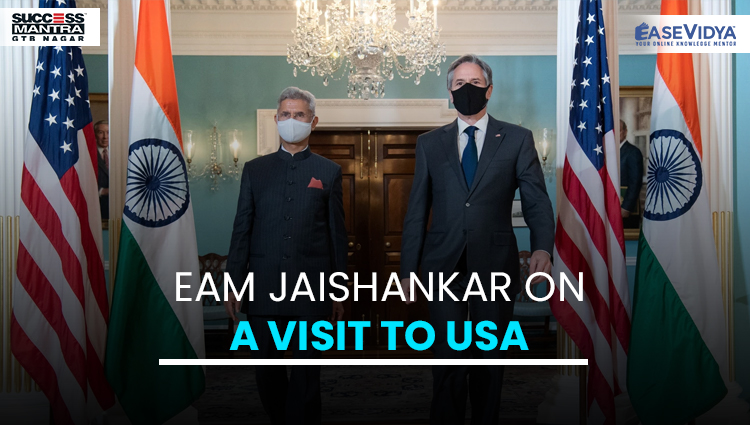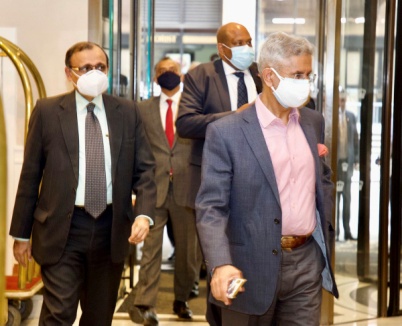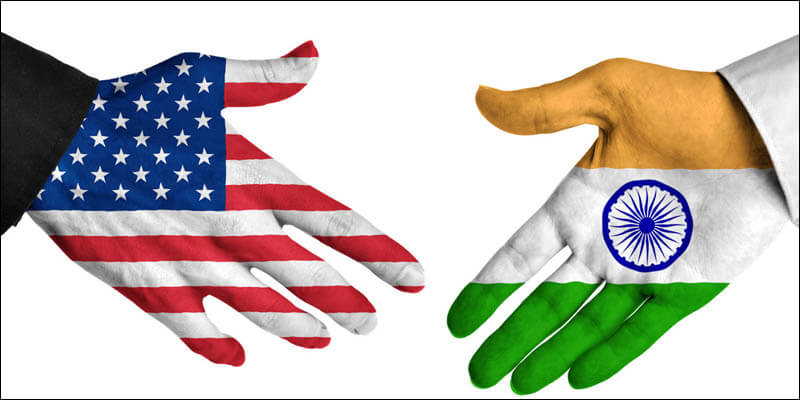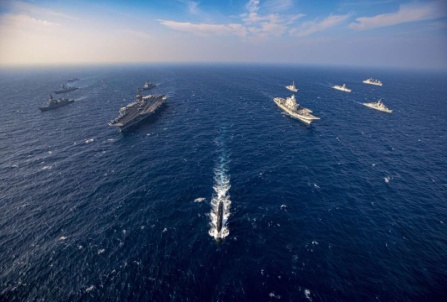
EAM JAISHANKAR ON A VISIT TO USA
EAM JAISHANKAR ON A VISIT TO USA

Recently, India’s External Affairs Minister (EAM) on his visit to the US met American lawmakers, National Security Advisor, Defense Secretary, U.S. Trade Representative (USTR) and representatives from the private sector. Earlier, the Prime Minister of India and US President had a conversation on issues related to supply chains for vaccines for Covid-19. India also participated in the Leaders' Summit on Climate which was convened by the US President virtually.
MAJOR DISCUSSION B/W BOTH THE NATIONS
Regional (Indo-Pacific) or global issues, Afghanistan and on further developing the India-US strategic and defence partnership. Vaccine cooperation, contemporary security challenges, support for efficient and robust supply chains, among others. The U.S. India Business Council (USIBC) meeting included a discussion on how the private sector, working via a consortium of 40 companies called the ‘Global Task Force for Pandemic Response’, could “support India’s health infrastructure and further ways to continue relief efforts. The USBIC was formed in 1975 as a business advocacy organization to enlighten and encourage the private sectors of both India and the US to enhance investment flows.
India’s Stand: The US military has played a key role in the US’s efforts to assist India as it battles a devastating wave of Covid-19. Trade, technology & business cooperation are at the core of strategic partnership which must be enhanced further for post-Covid economic recovery. Welcomed US’s positive stance on Intellectual property rights (IPR) issues & support for efficient & robust supply chains.
US’ Stand: Both are united in confronting Covid-19 together, in dealing with the challenge posed by climate change, to partner together directly, through QUAD (Quadrilateral Framework) and other institutions in the United Nations in dealing with many of the challenges of the region and around the world.
MUTUAL STAND BETWEEN INDIA & US

People-to-people ties and shared values are the foundation of the U.S.-India strategic partnership that is helping to end the pandemic, supporting a free and open Indo-Pacific, and providing global leadership on climate change. Welcomed cooperation that has resulted in the delivery of over USD 500 million in relief materials (state, federal and private sector sources) from the U.S. to India.
CURRENT STATE OF INDIA-US TIES
- Defence: India and US inked important defence pacts in the last few years and also formalised the four nation alliance of QUAD. The alliance is seen as an important counter to China in the Indo-Pacific. The Malabar exercise in November 2020 portrayed a high point in Indo-US strategic ties, it was the first time in 13 years that all four countries of QUAD came together sending a fir message to China. India now has access to american bases from Djibouti in Africa to Guam in the Pacific. It can also access advanced communication technology used in US defence.
- Trade: The previous US government ended India’s special trade status and also imposed several bans, India also retaliated with bans on 28 US products. Current US government has allowed all the bans by the previous government to expire.
- Indian Diaspora: There is a growing presence of Indian diaspora in all spheres in the For example the current Vice-President (Kamala Harris) of the US has a strong Indian connection. There are several Indian origin people holding strong leadership positions in the current US administration.
- Covid-Cooperation: When the US was reeling under a deadly Covid wave last year, India rushed important medical supplies and eased export restrictions to help the country. Initially the US showed hesitancy in returning the favour when India needed it, however the US quickly changed its stance and rushed supplies to India.
CONVERGENCE IN INDO-US RELATIONSHIP

In the post-cold war era, India's relationship with the US on defence and strategic issues has strengthened. This can be reflected in the following:
- A foundational military agreement that allows for the sharing of encrypted communications and equipment (COMCASA- Communications Compatibility and Security Agreement).
- A change in U.S. export control laws that places India in a privileged category of NATO and non-NATO U.S. allies.
- The signing of an Industrial Security Annex that will allow for greater collaboration among the two countries’ private defence industries.
- A new ‘2+2’ foreign and defence ministers dialogue.
- The bilateral Strategic Energy Partnership was launched in April 2018 under which India has started importing crude and LNG from the US. Now, the US is India’s sixth-largest source of crude oil imports and hydrocarbons. Inauguration of the first India-US tri-service military exercise and expansion of existing military exercises.
- Inclusion of India and South Asia in the US Maritime Security Initiative. This intense engagement has helped achieve robust support from the US against terrorism.
- This was evident after the Pulwama attack, leading to the designation of Jaish-e-Mohammad chief Masood Azhar as a global terrorist under UN Security Council Resolution 1267. Also, placing Pakistan on the grey-list of the Financial Action Task Force. The US under its Pivot to Asia policy views India as an ideal balancer to check the aggressive rise of China. Therefore, the US has formulated the concept of Indo-Pacific to counter China in the South China Sea and the Indian ocean. The US has designated India as an integral part of the Indo-pacific narrative by the conception of Quad.
CONCLUSION
There is a huge potential to boost bilateral trade between the countries especially on account of increasing anti-China sentiment in both the nations. Thus, the negotiation should focus on the resolution of various non-tariff barriers and other market access improvements as early as possible. In order to counter China in the maritime domain, India needs to fully engage with the US and other partners in the Indo-pacific region, in order to preserve the freedom of navigation and the rules-based order. In international politics, there are no permanent friends and no permanent enemies, only permanent interests. In such a scenario India must continue to pursue its foreign policy of strategic hedging.
TEST YOURSELF
Q.1 Which of the following is the current United States Secretary of State in Joe Biden's administration?
- Lloyd James Austin
- Jake Sullivan
- Antony Blinken: ANSWER
- None of the above
Q.2 Which of the following is correct regarding the USIBC formed in 1975 between India & the United States of America?
- Business Advocacy Organisation: ANSWER
- Defence Organisation between India & US
- Joint Venture between ISRO & NASA
- None of the following
Q.3 In November 2020 which of the following countries has joined the Malabar Exercise was the first time in 13 years that all four countries of QUAD came together?
- Japan
- United States of America
- Australia: ANSWER
- None of the above
Q.4 Consider the given statements & state which of the following is/are incorrect in the reference to the Indo-US bilateral relationship?
- Both are united in confronting Covid-19 together & in dealing with the challenge posed by climate change.
- The bilateral Strategic Energy Partnership was launched in April 2020 under which India has started importing crude and LNG from the US: ANSWER
- A foundational military agreement was signed that allows for the sharing of encrypted communications and equipment (COMCASA- Communications Compatibility and Security Agreement).
- None of the following
Q.5 India established & holds the 2+2 Ministerial meeting with which of the following countries?
- United Arab Emirates
- Australia
- United States of America
- Saudi Arabia
- II & III follows: ANSWER
- I & IV follows
- I & III follows
- All of the above













0 Comment